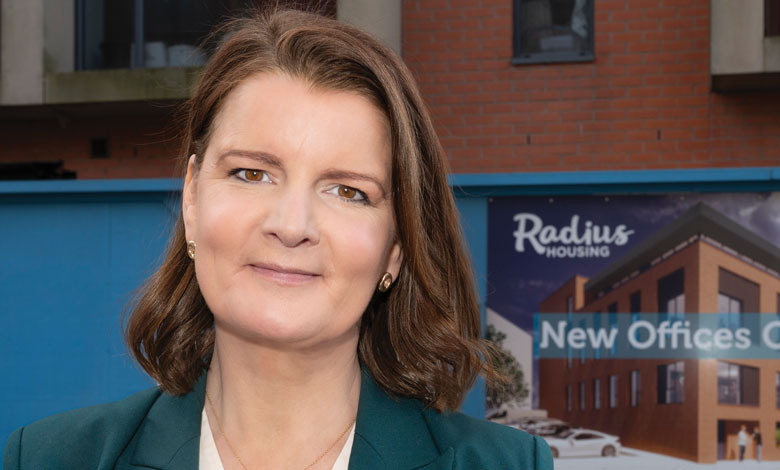
Risk in the social housing sector
10th July 2020
Supporting communities in challenging times
10th July 2020Affordable housing

The Department for Communities aims to have an amended definition of affordable housing in place by Autumn 2020, a year after a consultation was closed.
The Department initially launched the consultation on proposed changes to the definition in June 2019, in the absence of ministerial decision-making in Northern Ireland.
In January 2020, the New Decade, New Approach deal spelled out the inclusion of housing as a “specific priority” in the Programme for Government (PfG), outlining that alongside enhanced investment, the Executive would agree a target for new social and affordable home starts.
As of yet, no Programme for Government has been published by the newly reformed Executive, with the delay believed to be as a result of the Covid-19 outbreak and the subsequent response.
It is unclear whether a proposed “multi-year Programme for Government, underpinned by a multi-year budget and legislative programme”, if published prior to Autumn 2020, will be able to incorporate any planned new definition of affordable housing.
The Department says that while officials have completed a review of responses, it is proposing some minor amendments to what was originally consulted upon, “in light of issues raised by consultees”.
Affordable housing is housing provided for sale or rent outside of the general market, for those whose needs are not met by the market. Affordable housing which is funded by Government must remain affordable or, alternatively, there must be provision for the public subsidy to be repaid or recycled in the provision of new affordable housing.
A spokesperson added: “To test these proposals a period of further stakeholder engagement is planned over the coming weeks. On completion of this and subject to appropriate approvals, the Department hopes to have an amended definition in place by Autumn 2020.”
The change looks to incorporate a wider range of intermediate housing products into the definition of affordable housing, which could then be applied consistently in legislation, policy, local plans and in practice.
A summary of the Department’s preliminary findings included:
- that an overarching non-product based definition of affordable housing would provide a framework for increasing housing supply and meeting changing demands;
- that development or access to affordable housing needs to be viewed as outside the mainstream market, particularly where public funding support is available;
- government funded affordable housing should remain affordable or provision should be included for public funding to be repaid, or to be recycled to provide further affordable homes; and
- a potential to broaden the focus for intermediate housing to include groups such as active older people, those on low incomes and those with disabilities.
The resultant definition outlined by the Department, which it now says it is making minor amendments to is (see right).
Currently social housing in Northern Ireland works on the principle of universal access and the Department has stated that the new definition of affordable housing will not impact on access to social housing. However, it adds that the provision of a broader range of intermediate housing types should ultimately reduce pressure on social housing by providing lower income households with more housing options.
The four broad customer groupings for which intermediate homes products should be targeted towards includes:
- First Time Buyers (FTBs)/Returnees to the Market: Recognising the challenges that persist for first time buyers to access the property ladder, including insufficient means to fund a home deposit. Also the significant size of the category of individuals requiring new accommodation because of family breakdown;
- Active older people: Demographic change is expected to see an increase in demand and subsequent adaptations as more people live longer. Supports are necessary to help with the transition to more suitable homes;
- People with disabilities: People living with disabilities are under-represented in the housing market. One reason behind this is wider social barriers limiting economic activity but another is that the current stock of suitably adapted properties is below current demand;
- Lower income households: This group is viewed often as those who remain just out of touch of supports for housing needs. One example is those households who have low or no points on the social rented housing waiting list and therefore pay a more costly premium in the private rented sector, where tenancy is less secure.
Another important reasoning behind the Department’s move to amend the affordable housing definition is that councils in Northern Ireland are working on new planning requirements that mean social and affordable housing will be built alongside private housing in new, larger developments.
However, housing campaigners have stressed the value of ensuring that affordability, which can be dependent on a range of factors, is central to any developments.
The Department proposes that the updated definition to affordable housing should be flexible, with the ability to accommodate different needs and situations. To that end, the definition should seek to operate within parameters that follow the objectives of:
- to support and encourage an effective housing system;
- to target resources on those households who need help to access suitable and affordable housing;
- to deliver best value for the public purse in the context of our constrained spending environment;
- to provide a framework for how government and housing providers think about and deliver affordable housing;
- to improve the range of affordable housing options and in turn, the supply of new affordable housing properties; and
- to provide clarity for the planning system particularly in the light of councils bringing forward their Local Development Plans which take account of their community plans.






